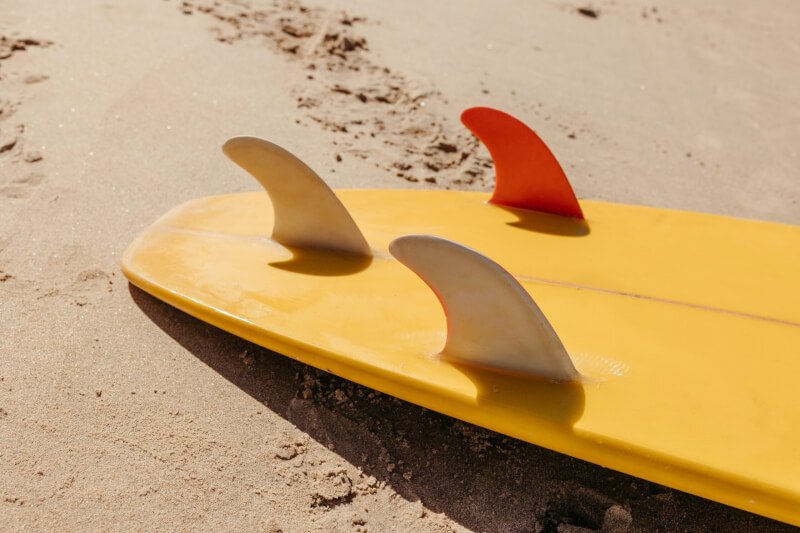Tea enthusiasts, get ready to embark on a delightful journey into the world of tea brewing equipment. In this ultimate guide, you will discover a treasure trove of information on everything you need to know about the tools and gadgets that make the perfect cup of tea. From sleek tea infusers to elegant teapots, we will explore the diverse range of brewing equipment available and provide expert tips to help you elevate your tea brewing game. So, grab your favorite tea leaves and prepare to unravel the secrets of tea brewing equipment!
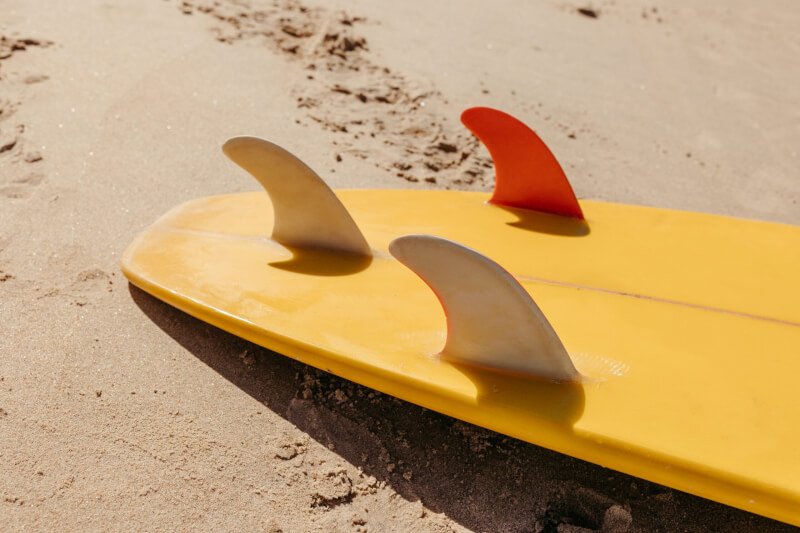
Tea Brewing Equipment Basics
Tea Kettles
Tea kettles are an essential tool for every tea lover. They are used to heat water to the appropriate temperature for brewing tea. There are various types of tea kettles to choose from, ranging from stovetop kettles to electric kettles. Stovetop kettles are popular for their classic design and the ability to heat water over a flame. Electric kettles, on the other hand, offer convenience and faster boiling times.
Teapots
Teapots are specifically designed for steeping tea. They come in different materials, shapes, and sizes, each with its own unique features and benefits. When choosing a teapot, consider the material, as it can affect the taste and infusion of your tea. Common materials include glass, ceramic, cast iron, and stainless steel. Additionally, teapots come in a variety of shapes and sizes to suit different brewing needs.
Infusers and Strainers
Infusers and strainers are used to contain loose tea leaves or herbs in a teapot or cup while allowing the water to circulate for proper infusion. Tea infusers come in various forms, such as stainless steel mesh balls, tea baskets, and tea spoons with built-in infusers. Tea strainers, on the other hand, are used to strain out any leaves or particles from the liquid while pouring. Both infusers and strainers are essential for achieving a clear and flavorful tea.
Types of Tea Kettles
Stovetop Tea Kettles
Stovetop tea kettles have been a traditional favorite for boiling water for tea. They are typically made of materials like stainless steel, copper, or enamel, and are designed to be placed directly on a stovetop burner. Stovetop kettles often feature a whistle that alerts you when the water is boiling. These kettles provide a nostalgic and classic tea brewing experience.
Electric Tea Kettles
Electric tea kettles have become increasingly popular due to their convenience and efficiency. They are powered by electricity and quickly heat water to the desired temperature. Electric kettles often come with adjustable temperature settings, allowing you to choose the perfect temperature for your specific tea variety. Many models also have additional features, such as keep-warm functions and automatic shut-off for safety.
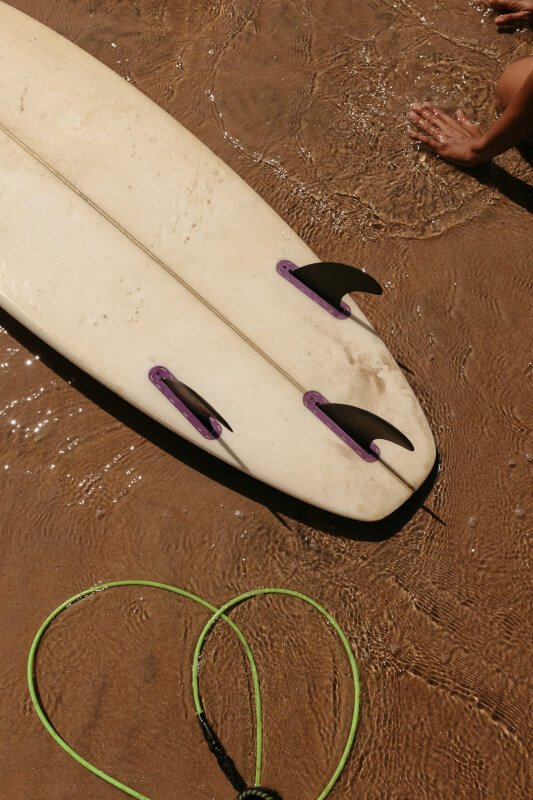
Choosing the Right Teapot
Materials
The material of your teapot can impact the flavor, temperature retention, and overall aesthetics of your tea. Glass teapots are excellent for showcasing the brewing process as they allow you to see the color and clarity of the tea. Ceramic teapots offer good heat retention and can be found in various styles and patterns. Cast iron teapots are known for their durability and heat distribution, making them great for retaining heat during longer steeping times. Stainless steel teapots are lightweight and easy to clean, making them a practical choice.
Shapes and Sizes
Teapots come in a variety of shapes and sizes to suit individual preferences and brewing needs. The most common shapes include traditional round-shaped teapots, modern and sleek designs, and even whimsical novelty shapes. When choosing the size of your teapot, consider the number of cups you typically brew at once to ensure you have enough capacity.
Single vs. Multiple Steeping
Some teapots are designed for single steeping, while others are suitable for multiple steeps. Single steeping teapots are commonly used for leaf teas that only require one steeping. On the other hand, teapots with a built-in infuser or strainer are ideal for steeping multiple times without needing to remove the leaves. This allows for a more controlled and intense flavor extraction.
Built-in Infusers
Teapots with built-in infusers provide added convenience for steeping loose tea. These infusers are often made of stainless steel or fine mesh, allowing water to flow through while keeping the leaves contained. Built-in infusers eliminate the need for additional tea infusers or strainers, making the brewing process more streamlined.
Infusers and Strainers
Tea Infusers
Tea infusers are used to hold loose tea leaves while steeping. They come in various shapes and sizes, including stainless steel mesh balls, tongs, spoons, and novelty shapes. Stainless steel mesh balls are popular for their simplicity and ease of use. They allow the tea leaves to unfurl and circulate freely in the hot water, resulting in a flavorful and well-infused cup of tea. Some infusers even come with a chain or handle for easy removal from the teapot or cup.
Tea Balls
Tea balls, also known as tea eggs, are a classic way to infuse loose tea leaves. They consist of two halves that open and close, allowing you to easily fill them with tea leaves. Tea balls are often made of stainless steel mesh or silicone, offering durability and ease of cleaning. These infusers are ideal for steeping larger quantities of tea leaves without the worry of particles escaping into the cup.
Tea Baskets
Tea baskets are larger infusers that sit inside a teapot, allowing the tea leaves to expand and release their flavors fully. They offer more space for the tea leaves to circulate, resulting in a more effective infusion. Tea baskets often feature a long handle or chain, making them easy to remove from the teapot once the desired steeping time is achieved.
Tea Strainers
Tea strainers come in various forms, such as fine mesh sieves or metal filters. They are used to strain out any loose tea leaves or particles that may have been left behind during the brewing process. Tea strainers are particularly useful when pouring directly from a teapot into a cup. They ensure a clear and smooth tea, free from any unwanted debris.
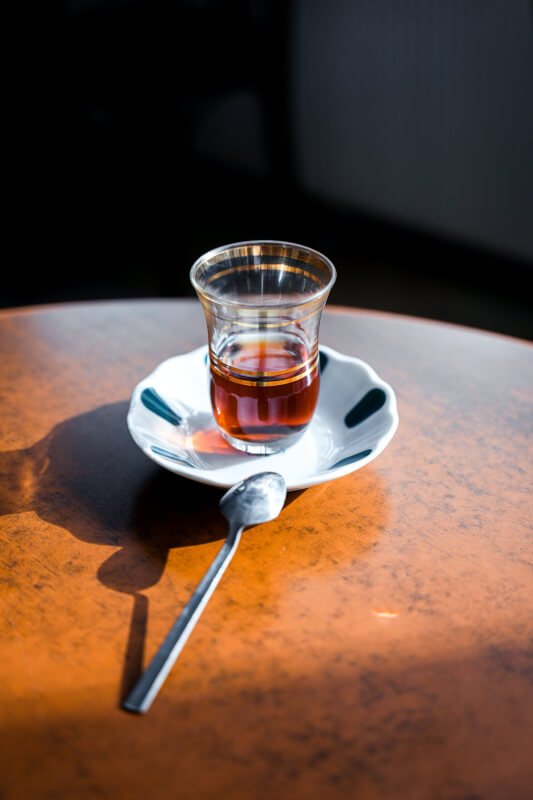
Tea Brewing Accessories
Tea Timers
Tea timers are helpful tools to ensure you achieve the perfect brew every time. They come in various forms, including digital timers, hourglass-style timers, and smartphone apps. Tea timers allow you to set specific time intervals for different tea varieties, ensuring you steep your tea for the optimal duration. This helps to avoid over or under steeping, resulting in a well-balanced and flavorful cup of tea.
Thermometers
Tea thermometers are used to measure the temperature of your water accurately. Temperature plays a crucial role in brewing different tea varieties as it can affect the flavor, aroma, and overall experience. Digital thermometers are commonly used and provide quick and accurate readings. Some tea thermometers even come with temperature presets for different types of tea, making it easier to achieve the perfect temperature each time.
Scales
Tea scales are useful for measuring the right quantity of tea leaves for each brew. They ensure consistency in the tea-to-water ratio, leading to a consistently flavorful cup. Digital scales are commonly used as they provide precise measurements and typically offer different units of measurement. Tea scales often include a taring function, allowing you to deduct the weight of your teapot or cup for more accurate readings.
Travel Infusers
For tea enthusiasts on the go, travel infusers are essential. These infusers are designed to be compact and portable, making it easy to enjoy your favorite loose-leaf tea anywhere. Travel infusers often come with a built-in infuser and a separate compartment to store extra tea leaves or herbs. Some even feature an insulated outer layer to keep your tea hot for longer periods.
Water Temperature Control
Tea Thermometers
Tea thermometers are an essential tool for controlling water temperature accurately. Different teas require specific water temperatures to extract their optimal flavors without causing any bitterness or astringency. Using a tea thermometer ensures you achieve the desired temperature before steeping your tea, resulting in a well-balanced and enjoyable cup.
Variable Temperature Kettles
Variable temperature kettles are a convenient option for precise water temperature control. These kettles allow you to choose and set the desired temperature for your specific tea variety. They often come with preset temperature options, catering to different types of tea such as green, black, herbal, or oolong. Variable temperature kettles eliminate the need for a separate tea thermometer and provide a hassle-free brewing experience.
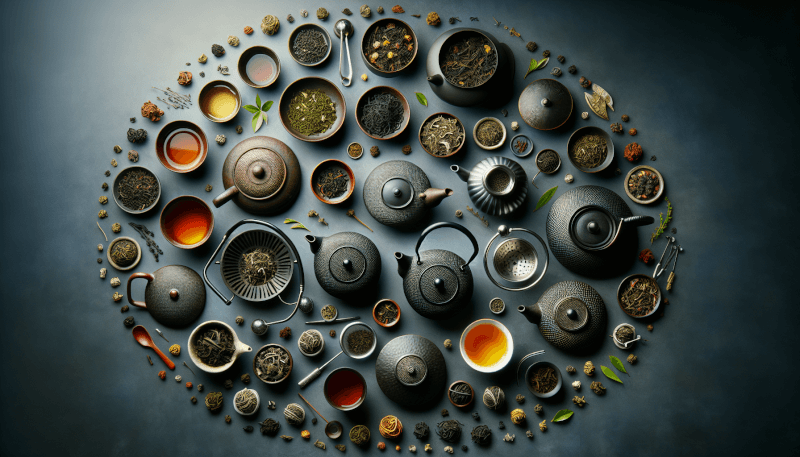
Measuring Tools for Accuracy
Tea Scales
Tea scales are useful for accurately measuring the weight of tea leaves. Measuring the right quantity of tea ensures consistent flavor and intensity with each brew. Digital scales are commonly used for their precise measurements and ability to provide different units of weight. Some tea scales even have a taring function that deducts the weight of your teapot or cup, allowing you to measure the tea leaves directly.
Measuring Spoons
Measuring spoons are a convenient and versatile tool for measuring loose tea. They come in various sizes and are often made of stainless steel or plastic. Measuring spoons allow you to scoop and measure the desired amount of tea leaves, providing reproducible results. Some measuring spoons even have markings to indicate the recommended amount for different tea strengths.
Measuring Cups
Measuring cups are a practical tool for accurately measuring the volume of water. They come in different sizes, typically in ounces or milliliters, and often have clear markings to indicate the desired measurement. Measuring cups with a spout are particularly useful for pouring water into the teapot or cup without any spills or mess.
Steeping Techniques
Basic Steeping Process
The basic steeping process involves heating water to the appropriate temperature and allowing the tea leaves to infuse for a specific duration. Start by boiling water according to the recommended temperature for your tea variety. Once the water reaches the desired temperature, pour it over the tea leaves in a teapot or cup. Let the tea steep for the recommended time, usually 2-5 minutes, before straining or removing the infuser. Adjust the steeping time based on your preferred strength and taste.
Western Brewing
Western brewing is a popular method commonly used for black, green, and herbal teas. It involves using a teapot or infuser basket to steep the tea leaves in hot water. Add the desired amount of tea leaves to the teapot or infuser, then pour hot water over the leaves. Allow the tea to steep for the recommended time, and then strain it into a cup. Western brewing allows for a quick and convenient way to brew tea without multiple infusions.
Gongfu Brewing
Gongfu brewing, also known as Chinese tea ceremony brewing, is a traditional method that focuses on multiple infusions and shorter steeping times. It is commonly used for oolong and pu-erh teas. Gongfu brewing involves using a small teapot and a small teacup or gaiwan. Add a higher tea-to-water ratio to extract the full flavors of the tea. Steep the tea for a short duration, typically 10-30 seconds, before pouring it into the cups. The process is repeated multiple times, with each infusion bringing out unique flavors and aromas.
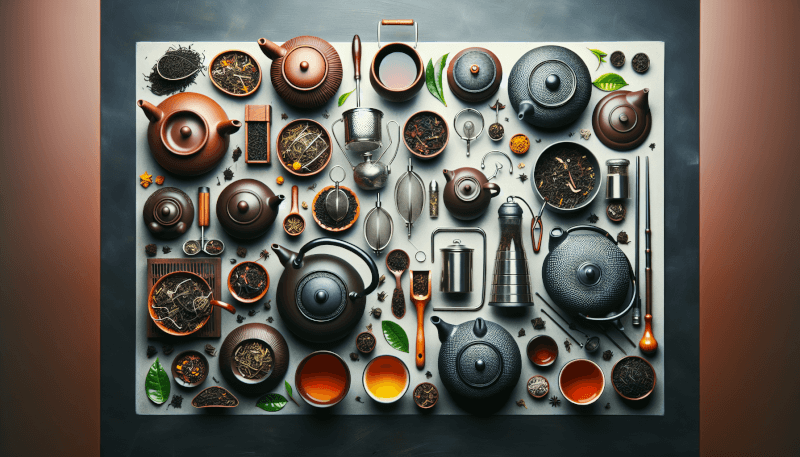
Specialty Brewing Methods
Cold Brew
Cold brew is a popular brewing method for enjoying tea during hot summer months. It involves steeping tea leaves in cold or room temperature water for an extended duration, usually several hours or overnight. Cold brew extracts a smoother and sweeter flavor from the tea leaves and minimizes bitterness and astringency. To make cold brew, simply add tea leaves to a pitcher filled with cold water and let it steep. Once steeped, strain the tea leaves and enjoy the refreshing and delicate flavors.
Matcha Preparation
Matcha, a finely ground powdered green tea, requires a different brewing technique. To prepare matcha, you’ll need a bamboo whisk, a bowl, and high-quality matcha powder. Start by sifting the matcha powder into a bowl to remove any clumps. Add hot but not boiling water to the bowl and whisk vigorously in a zigzag motion until frothy. The resulting matcha should have a vibrant green color and a smooth, creamy texture. Matcha can be enjoyed on its own or used as an ingredient in various recipes.
Blooming Tea
Blooming tea, also known as flowering tea, is an elegant and visually stunning way to brew tea. It involves hand-tied tea leaves and flowers that unfurl and bloom when steeped in hot water. To brew blooming tea, place a blooming tea ball in a clear glass teapot or teacup. Add hot water and watch as the tea ball unfurls, revealing a beautiful flower inside. Blooming teas are not only a treat for the eyes but also offer a delicate and aromatic cup of tea.
Maintaining and Cleaning
Cleaning Tea Kettles
Regular cleaning of tea kettles helps maintain their performance and prolong their lifespan. To clean a tea kettle, start by emptying any remaining water and residue. Fill the kettle with equal parts of water and white vinegar, and let it simmer for around 15 minutes. After simmering, discard the solution and rinse the kettle with clean water. For stubborn mineral deposits, scrub the interior of the kettle with a mixture of baking soda and water. Rinse thoroughly before using the kettle again.
Cleaning Teapots
Teapots require proper cleaning to remove any residue or flavors that may impact future brews. After each use, empty any remaining tea leaves and rinse the teapot with warm water. For deeper cleaning, use a mild detergent or dish soap and gently scrub the interior and exterior of the teapot. Avoid using abrasive materials that may scratch the surface. Rinse the teapot thoroughly and allow it to dry completely before storing or using again.
Cleaning Infusers and Strainers
Infusers and strainers should be cleaned after each use to remove any tea leaves or particles. Rinse the infuser or strainer under warm water to remove any loose tea. For more thorough cleaning, use a mild detergent and gently scrub the infuser or strainer with a soft brush. Be careful not to damage the mesh or fragile parts. Rinse thoroughly and allow the infuser or strainer to dry completely before the next use.
By understanding the different tea brewing equipment basics and techniques, you can enhance your tea brewing experience and craft the perfect cup of tea every time. Experiment with different equipment, temperatures, and steeping methods to discover your preferred brewing style and explore the diverse world of tea flavors and aromas. Cheers to your tea brewing adventures!

